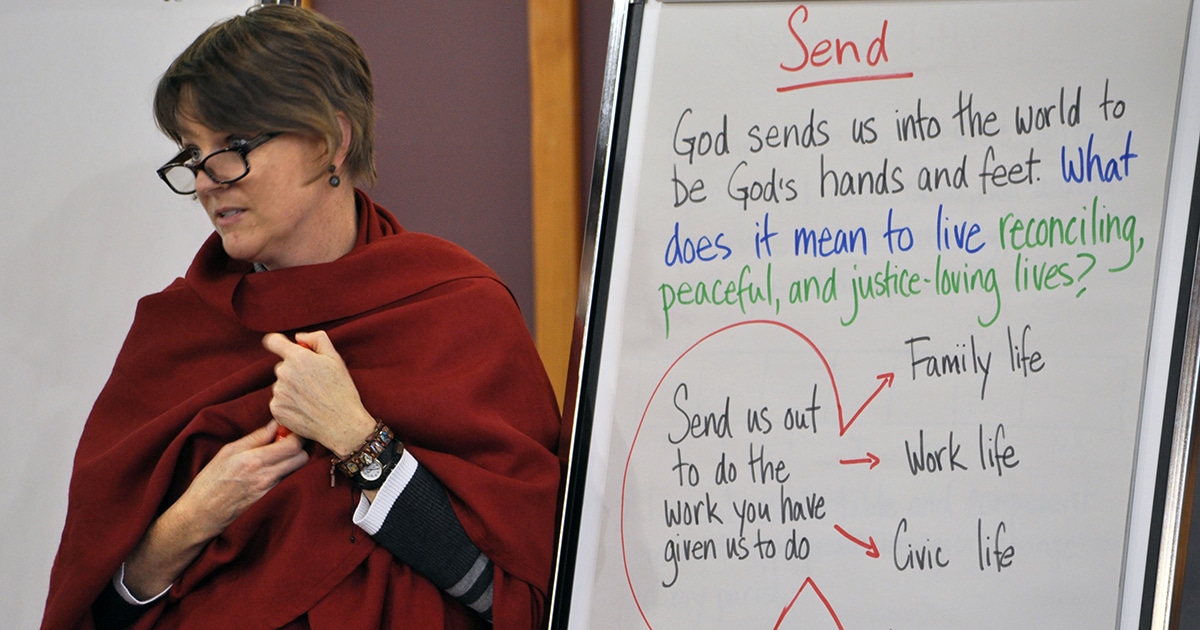The following is part of an ongoing series on congregational development, which features reflections from Anglicans on how they are responding to the challenges facing churches today.
A longtime trainer at the Diocesan School for Parish Development in Vancouver, B.C., Tasha Carrothers is familiar with a wide range of models for congregational development.
Currently ministry resource associate for the Diocese of New Westminster, Carrothers describes congregational development as “finding a fit between the component parts in a congregation” through collaboration between clergy and laypeople.
“It’s about mission, but it’s about more than that,” Carrothers said. “It’s about organizational health.”
“When we talk about there being a fit, what we mean is, yeah, you have a mission,” she added. “But your mission is a good fit with the people who are in your parish, the people who are around in the neighbourhood, with your financial means, with your buildings. You can have a mission that is just disconnected from reality, or doesn’t stretch you enough.”
Carrothers was initially hired at the diocesan synod office to resource a specific program around parish revitalization and reorganization. The program was designed to facilitate conversations between parishes in the face of declining church attendance and the need for repairs on many buildings—two common challenges facing churches across Canada.
In her experience as a layperson, Carrothers has encountered many parishes and congregations that have worked on strengthening different aspects of their organization, which in turn improves their ability to carry out their ministry.
As an example of where the process might start, she recalled a small rural congregation in which the priest had identified a lack of connection and engagement with the surrounding neighbourhood.
“They’re starting with something that the priest has identified as a need, based on her understanding of what it is that a parish church should be doing … So you could say that that’s about clarifying their mission.”
In identifying the most pressing needs faced by a congregation, one area of focus will often lead directly into others. Carrothers pointed to a frequent instance of clergy approaching her and suggesting that their congregation needs to work on visioning—creating a compelling vision of goals and objectives to help guide it.
“After interviewing them for a while, it turns out it isn’t really visioning for the whole system that they need to work on,” she said. “It’s more that the leaders don’t understand their roles. The wardens don’t really know what they’re supposed to be doing, or there’s this jockeying back and forth between the authority of the priest and the role of the laypeople.
“So we could work on that, just developing clearer boundaries [and] clearer understandings around decision-making that’s going to make things go more smoothly. Then the place will be happier, and then visitors might stick around. It can be that basic.”
Following a series of town hall meetings to identify mission priorities in the next five years for St. Paul’s Anglican Church in Vancouver, Carrothers ran a workshop with members of the congregation to clarify the role of parish councils, which had not been clearly articulated canonically.
To help improve the effectiveness of parish councils at St. Paul’s, she asked council members as individuals to reflect on why they chose to serve on council. Rather than out of a sense of obligation, Carrothers indicated that serving on parish councils should represent a form of participation in Christian service.
Along with reflection at the individual level, the workshop also asked council members to reflect on their goals as a council.
“That intervention is going to make council more effective,” Carrothers said. “It’s going to make the church experience more fulfilling for those individuals, and that’s congregational development … It helps strengthen the mission, but it’s one of the building blocks.”
Key to successful congregational development, however, is maintaining a sense of proportion regarding the long-term success of implementing different plans and ideas.
“It’s not where I go in one Saturday and run a workshop … and everybody feels good at the end of the workshop, but then nobody’s actually able to do it, or the opportunities don’t arise, and so there’s no membership growth,” Carrothers cautioned. “Let’s just be realistic about what the outcomes are going to be as well.”
Interested in keeping up-to-date on news, opinion, events and resources from the Anglican Church of Canada? Sign up for our email alerts .

